AI could raise profits by 38% by 2035. Companies that adopt AI will streamline operations and gain an edge.
As they weave AI into their core, organizations not only seek efficiency but also cultural rebirth. 54% of executives see AI as a means to unmatched strategic gain.
Also read: 7 beste gratis online fotobackupdiensten
AI-Powered Business Transformation
Organizations use AI to enhance efficiency, streamline processes, and drive innovation.
AI-powered business transformation is not just new technology but rethinking operations for an edge.
McKinsey reports that AI can boost profitability by 38% by 2035 for businesses that adopt it wisely.
Adopting AI requires integrating it into existing frameworks.
This integration includes software and algorithms, demanding a cultural shift.
Leaders must foster a culture where data-driven decisions and automation become routine.
PwC found that 54% of executives believe AI gives their companies a competitive advantage, proving its potential.
Leveraging AI for Operational Excellence
Businesses use AI to improve operational excellence by automating tasks, enhancing customer service, and optimizing supply chains.
AI algorithms analyze data to find inefficiencies, forecast demand, and streamline inventory.
- Key Benefits of AI in Operations:
- Automation: Cut human error and save time with automation.
- Predictive Analytics: Use past data to foresee trends and behavior.
- Enhanced Decision Making: Real-time insights enable quick, accurate decisions.
Statistics:
- Deloitte’s survey shows 83% of AI early adopters in operations report financial gains.
- Companies using AI tools in supply chain saw up to a 15% boost in on-time delivery.
Custom AI Solutions Tailored to Client Needs
Every business faces unique challenges.
Custom AI solutions fit specific industry needs.
These solutions can include bespoke machine learning models and predictive analytics aligned with a company’s vision.
Engaging clients to understand their needs is vital for effective AI design and implementation.
Consider these pivotal steps:
- Assessment of Client Needs: Identify challenges and goals for a tailored AI solution.
- Development of Prototypes: Create and test prototypes that meet operational needs.
- Implementation and Review: Launch the AI solution with regular assessments to refine it.
Benefits of Custom Solutions:
- Better alignment with business goals.
- Greater user adoption due to ease of integration.
- Improved effectiveness through tailored capabilities.
Future-Proofing Business Models with AI Insights
Organizations using AI for trend analysis and market demands navigate uncertainty better.
- Future-proofing Strategies:
- Diversification of Products/Services: Use AI to spot market gaps and develop offerings.
- Continuous Learning Systems: Implement machine learning that adapts as data evolves.
- Customer-Centric Approaches: Build strong relationships through personalized AI experiences.
Data Insights:
- The World Economic Forum shows AI-driven companies are 2.5 times more likely to achieve above-average profitability.
- Businesses utilizing predictive insights often reduce customer churn by up to 20%.
Also read: 7 best free file compression software
Hybrid Cloud Strategies for Enterprises
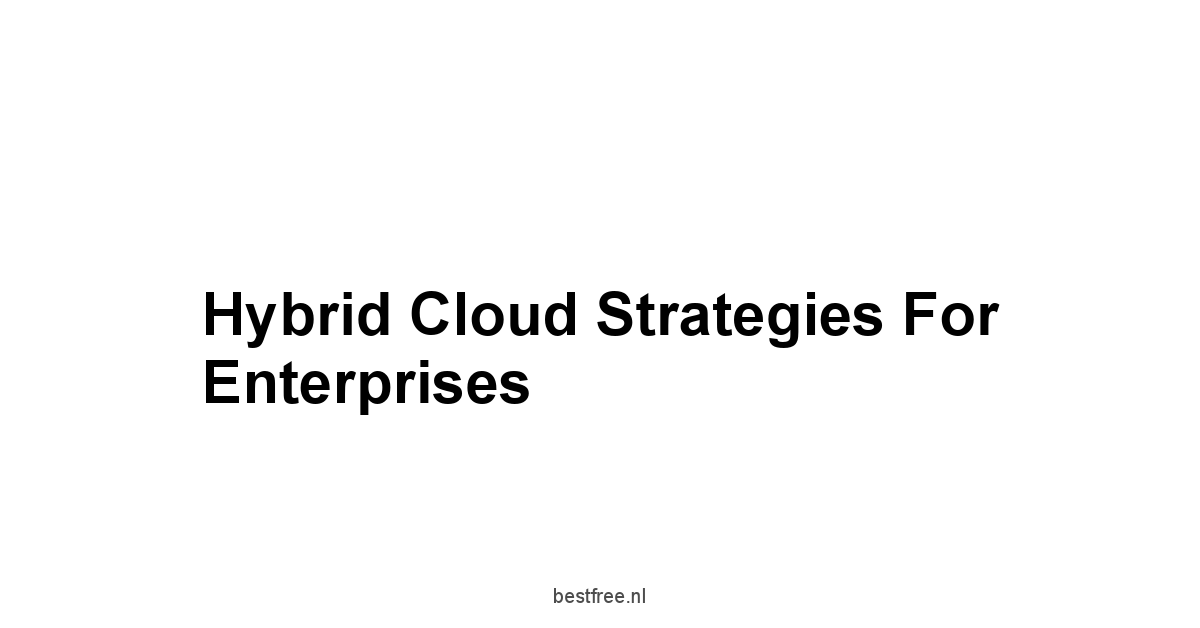
In the age of cloud computing, hybrid cloud strategies are vital. Enterprises seek operational efficiencies.
By combining public and private cloud services, organizations gain needed flexibility and scalability.
Gartner reports that by 2025, 85% of enterprises will adopt a hybrid cloud model, understanding its power to improve data management and reduce costs.
Hybrid clouds allow scaling up or down as business needs shift. They provide agility in today’s economy.
This approach lets enterprises manage workloads efficiently while ensuring data security and compliance.
The shift to hybrid cloud poses challenges. These range from technical issues to strategic concerns.
Organizations must handle system integration, data management, and security across various environments.
A successful strategy demands clear planning and execution to harness hybrid cloud architecture’s benefits.
- Critical Considerations for Hybrid Cloud:
- Data Management: Clarity on data placement, accessibility, and compliance is crucial.
- Integration Efforts: Invest in tools for seamless integration between cloud types.
- Security Measures: Enforce strong security protocols for sensitive data.
Best Practices:
- Define a Hybrid Cloud Strategy: Set specific goals to guide your cloud journey.
- Choose the Right Partners: Work with cloud providers that match your strategic vision.
- Monitor and Optimize: Review hybrid cloud performance regularly and adjust strategies.
Enhancing Scalability and Flexibility with IBM Solutions
IBM offers scalable solutions to optimize cloud infrastructures.
Utilizing IBM Cloud boosts computational power and adaptability to market changes.
Scalable solutions enable rapid responses to demand, launching applications or increasing storage as needed.
- IBM Solutions Include:
- IBM Cloud Pak for Data: Improves data management and analytics.
- IBM Watson: AI services for insights and workflow automation.
- IBM Cloud Kubernetes Service: Simplifies application deployment in hybrid settings.
Performance Metrics:
- Organizations using IBM Cloud report 30% lower operational costs.
- IBM’s hybrid solutions deliver products and services 50% faster to market.
Realizing Cost Efficiency through Cloud Optimization
Cost efficiency is crucial for enterprises considering hybrid cloud setups.
Optimizing resources leads to significant savings.
By examining usage and performance, organizations can align spending with needs, avoiding excess and waste.
- Strategies for Cost Optimization:
- Automated Scaling: Use automated scaling to match resources with demand.
- Resource Management Tools: Apply tools for insight into usage patterns.
- Regular Audits: Conduct reviews to cut unnecessary costs and optimize allocation.
Cost Benefits:
- Firms with effective hybrid cloud strategies often see up to a 20% reduction in IT operating costs.
- Organizations managing cloud spending effectively report a 30% increase in efficiency.
As businesses adopt digital technologies, security and compliance are sharper focuses.
Protecting information while meeting regulations is critical for all sectors.
In 2021, IBM reported breaches averaged $4.24 million, stressing robust security needs.
Regulatory frameworks like GDPR and CCPA set new data protection standards, urging businesses to prioritize compliance.
A strong security framework is essential to protect data and build trust.
Building Resilient Security Frameworks
Creating a resilient security framework demands a thorough approach in technology, processes, and people.
Organizations must invest in advanced solutions to prevent breaches while training employees in best practices.
- Key Components of a Resilient Framework:
- Risk Assessment: Regularly assess threats and existing security effectiveness.
- Incident Response Plan: Prepare a detailed plan for swift incident management.
- Continuous Monitoring: Use tools for real-time system monitoring for anomalies.
Effective Measures:
- Implement Multi-Factor Authentication MFA: Require multiple verifications to increase security.
- Utilize AI for Threat Detection: AI can identify risks faster than traditional methods.
- Conduct Regular Training: Update employees on emerging threats and protection.
Proactive Strategies for Risk Management
Proactive risk management is essential in the digital era.
Organizations must foresee risks and create mitigation plans.
These strategies blend technology, policy, and employee training.
-
Proactive Risk Management Techniques:
- Threat Intelligence: Use intelligence to stay ahead of security threats.
- Policy Development: Form extensive policies governing data and incident response.
- Regular Audits: Schedule audits to ensure compliance and preparedness.
-
Companies adopting proactive risk strategies cut their chances of a successful attack by up to 40%.
-
Forrester’s survey shows proactive firms face 23% fewer incidents than reactive ones.
Compliance Solutions Across Industries
Compliance solutions need tailoring to industry demands.
Organizations are adopting technology to simplify compliance, from healthcare to finance.
Automation and AI streamline compliance processes, ensuring efficiency in meeting regulations.
- Key Compliance Technologies:
- Regulatory Technology RegTech: Tools for monitoring and reporting compliance.
- Blockchain: Enhances transparency and security in transactions.
- AI for Compliance: Machine learning analyzes data for adherence to regulations.
Industry Statistics:
- IDC predicts that by 2025, compliance technology spending will hit $125 billion globally.
- Businesses leveraging RegTech may cut compliance costs by 30-40%.
Also read: best free conversational intelligence software in 2025 2
Data-Driven Decision Making
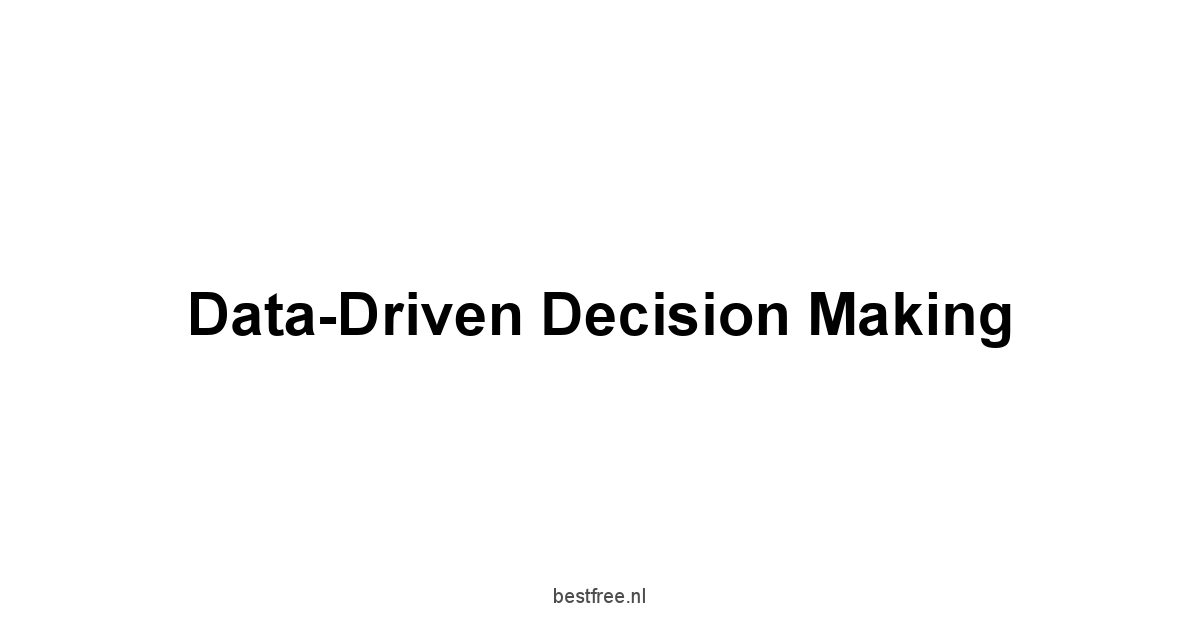
Data-driven decision-making changes how organizations operate.
Data analytics helps businesses make choices that fit strategic goals.
Extracting insights from data can boost efficiency and drive growth.
Gartner says data-driven organizations are 23 times more likely to gain customers and 6 times more likely to keep them.
Data analytics lets organizations measure performance, spot opportunities, and reduce risks.
Using data wisely can give an edge in crowded markets.
Harnessing Data Analytics for Strategic Insights
Harnessing data analytics means collecting, analyzing, and interpreting data for insights that guide business strategies.
This helps in understanding customer preferences and predicting trends for product development and marketing.
- Effective Data Analytics Strategies:
- Data Consolidation: Pull data from various sources for a complete view.
- Predictive Analytics: Use historical data to project future trends.
- Visualization Tools: Employ dashboards to make data clear and accessible.
Types of Analytics:
- Descriptive Analytics: Examine past performance and find patterns.
- Diagnostic Analytics: Explore reasons for past results.
- Predictive Analytics: Anticipate future scenarios based on earlier data.
Real-World Impact:
- Companies using analytics saw a 139% improvement in customer experience, a McKinsey study found.
- Organizations making data-driven decisions can boost operational efficiency by 30%.
Implementing Effective Data Governance
Data governance underpins successful data-driven decision-making.
A solid data governance framework ensures data is accurate, accessible, and secure.
Proper governance enhances compliance and builds a culture of accountability.
- Core Principles of Data Governance:
- Data Stewardship: Define roles and responsibilities for data management.
- Quality Standards: Set processes to monitor and maintain data quality.
- Access Control: Specify who can access data and under what conditions.
Steps to Implement Data Governance:
- Establish a Governance Framework: Create policies and procedures for data management.
- Engage Stakeholders: Include relevant departments in the governance plan.
- Monitor and Adapt: Regularly review and adjust governance practices.
Techniques for Real-Time Data Utilization
Utilizing data in real-time is crucial for businesses needing agility.
Real-time analytics allows organizations to act quickly—optimizing operations, enhancing customer interactions, or managing risks.
- Technologies That Enable Real-Time Analytics:
- Stream Processing: Analyze data on the move for immediate insights.
- In-Memory Databases: Speed up data retrieval and analysis by using memory.
- AI and Machine Learning: Use algorithms to learn from real-time data and inform decisions.
Benefits of Real-Time Data Utilization:
- Better customer engagement through speedy responses.
- Increased operational efficiency by allowing instant process adjustments.
- Stronger risk management by spotting threats early.
Impact of Real-Time Analytics:
- Organizations using real-time analytics see a 30% rise in operational efficiency, says IBM.
- Companies using real-time data reporting boosted customer satisfaction by 20%.
Also read: best free proofreading software in 2025
Industry-Specific Consulting Expertise
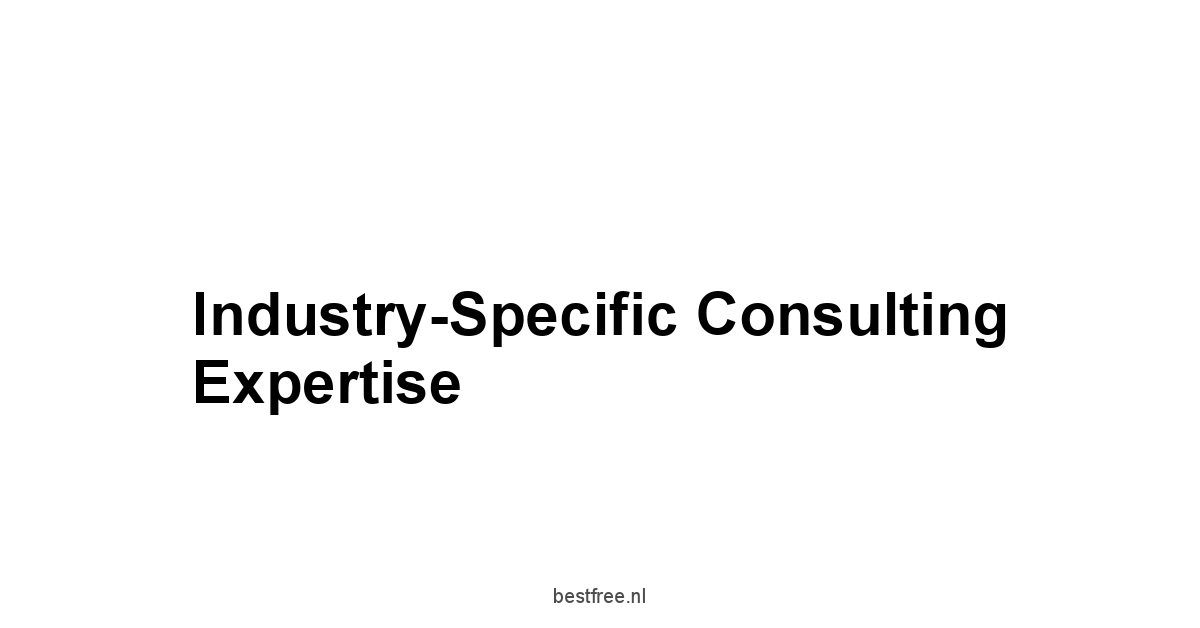
Consulting has become specialized. Firms like IBM lead in targeted industry solutions.
Industry-specific consulting allows organizations to gain expert knowledge and tailored solutions that address unique challenges.
Growth in this sector is evident, projected to reach $419 billion by 2026.
Organizations engaging industry-savvy consultants navigate challenges better and seize unique market opportunities.
Tailored Solutions for the Financial Sector
The financial sector faces unique challenges from regulatory compliance to risk management.
- Key Focus Areas in Financial Consulting:
- Regulatory Compliance: Meeting stringent regulations without losing efficiency.
- Risk Assessment: Frameworks to identify and mitigate financial risks.
- Digital Transformation: Technology to modernize services and enhance customer experience.
Impact of Tailored Solutions:
- Financial institutions adapting digitally often see a 20% revenue increase.
- Automating compliance can cut costs by up to 30%.
Innovations for Healthcare and Life Sciences
Healthcare and life sciences consulting has grown vital due to rapid technology and regulatory changes.
Consulting expertise helps organizations navigate complexities, improving patient care and efficiency.
- Core Areas of Innovation:
- Telehealth Solutions: Digital platforms transforming patient interactions.
- Data Analytics in Healthcare: Using data for improved outcomes and insights.
- Regulatory Compliance: Ensuring adherence to regulations while fostering innovation.
Market Trends:
- The healthcare consulting market is expected to reach $26.6 billion by 2026, focusing on data analytics and digital health.
- Organizations using predictive analytics report a 25% drop in hospital readmissions.
Transforming Retail with Technological Integration
In retail, consulting services focus on technological integration to enhance customer experiences and manage inventory.
Retailers need guidance to implement solutions that drive efficiency and loyalty.
- Key Trends in Retail Consulting:
- E-commerce Optimization: Enhancing online sales and customer engagement.
- Supply Chain Innovation: Using technology to streamline operations and cut costs.
- Data-Driven Personalization: Analytics to create personalized experiences.
Retail Impact Data:
- Retailers personalizing marketing see a sales boost of 10% or more.
- Companies using advanced supply chain analytics report a 15% cost reduction.
Also read: best data labeling software in 2025
Executive Leadership and Change Management
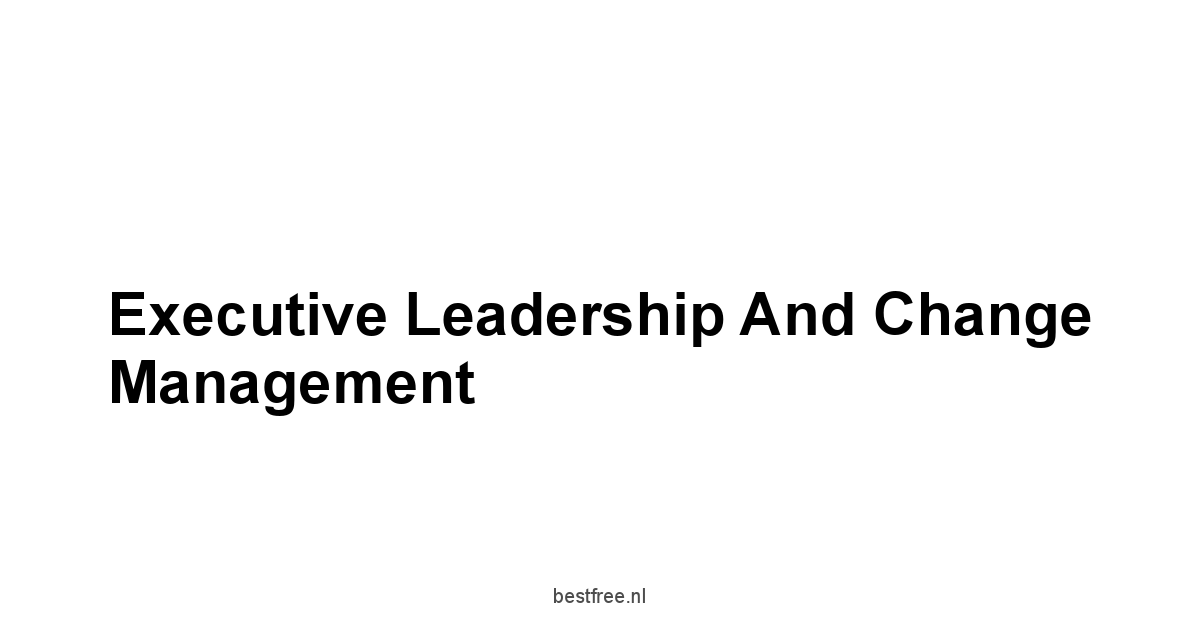
Executives must foster a culture of innovation and adaptability.
Harvard Business Review found leader-driven initiatives succeed 8 times more than those lacking strong leadership.
Focus on change management is vital for those adopting new technologies or models.
Successful leaders engage, inspire, and guide their teams through transitions, minimizing resistance and maximizing buy-in.
Fostering a Culture of Innovation
Building a culture of innovation requires an environment that encourages creativity and welcomes new ideas.
Executives shape this culture by showing openness and support for innovation.
- Strategies to Foster Innovation:
- Encourage Experimentation: Let teams explore new ideas without fear of failure.
- Reward Creativity: Recognize and reward employees for innovative solutions.
- Establish Collaborative Spaces: Create environments that promote collaboration and brainstorming.
Benefits of an Innovative Culture:
- Companies with a strong innovation culture outperform competitors 3 times more.
- Engaged teams show a 21% increase in productivity.
Strategies for Leading Digital Transformation
Digital transformation demands significant changes in processes and culture.
Leaders must define transformation goals and communicate them effectively.
-
Key Steps in Leading Transformation:
- Vision Development: Define a clear vision for digital transformation.
- Stakeholder Engagement: Involve key stakeholders early to build commitment.
- Change Management Planning: Create plans to manage resistance and ensure smooth transitions.
-
Organizations with a digital transformation strategy enjoy a 30% higher success rate.
-
Executives leading digital initiatives typically see a 20% improvement in performance.
Effective Stakeholder Engagement Techniques
Engaging stakeholders is essential for successful change initiatives.
Leaders must connect with stakeholders—employees and customers alike—and address their concerns.
- Stakeholder Engagement Techniques:
- Open Communication: Foster an environment where stakeholders voice concerns and suggestions.
- Regular Updates: Keep stakeholders informed about progress and outcomes.
- Feedback Loops: Collect feedback from stakeholders and adapt strategies as needed.
Engagement Impact:
- Effective engagement increases change initiative success by 70%.
- Organizations prioritizing communication see a 60% improvement in employee satisfaction during change.
Also read: best natural language processing nlp software in 2025
Sustainable Business Practices
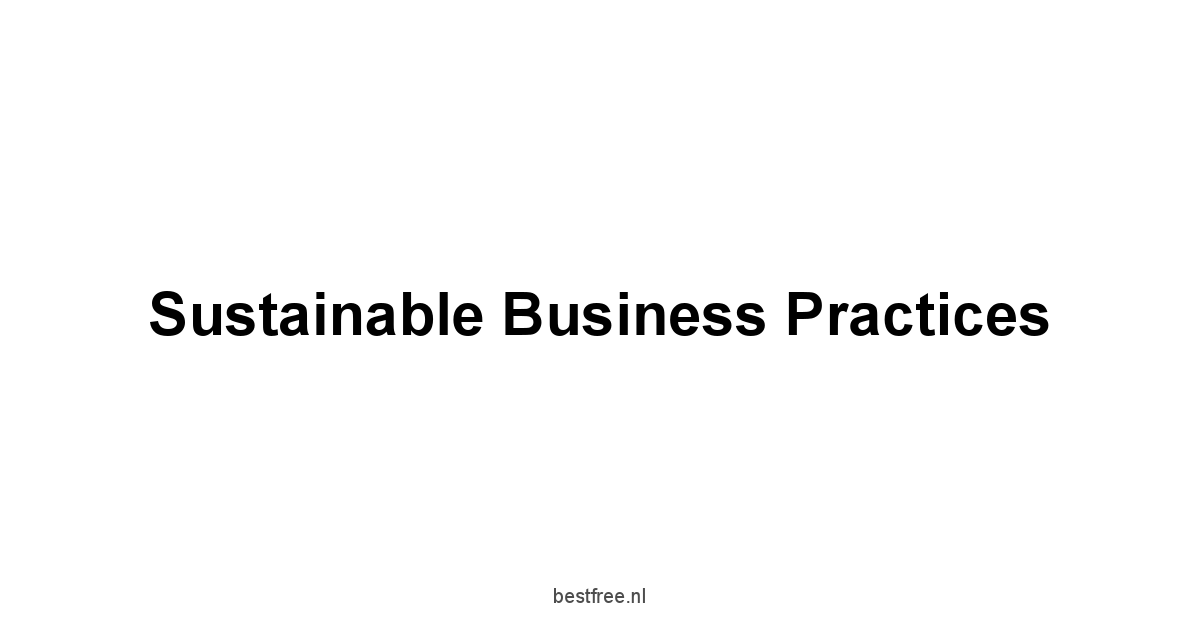
As the world considers sustainability, businesses must adopt sustainable practices.
Consumers demand accountability, with 66% ready to pay more for eco-friendly products.
For organizations, adopting sustainable practices is ethical and necessary. It leads to savings and a stronger brand reputation.
Developing sustainable strategies means assessing environmental impacts and implementing practices that reduce harm while increasing resource efficiency.
Integrating Sustainability into Core Business Strategies
Successful sustainability aligns corporate strategies with environmental responsibility.
Businesses cannot view sustainability as a side issue; it must be central to operations.
- Approaches to Integrating Sustainability:
- Sustainable Supply Chains: Design supply chains that prioritize environmental responsibility.
- Circular Economy Initiatives: Move from linear to circular models, turning waste into resources.
- Employee Education: Build a workforce that champions sustainability.
Sustainability Statistics:
- Companies with sustainability initiatives see a 20% rise in employee engagement.
- Organizations embracing sustainable practices save an average of 10% on operational costs.
Measuring Impact: Metrics that Matter
Effective metrics are essential for organizations committed to sustainability.
Businesses must monitor their environmental impact, assessing performance and seeking improvement.
- Essential Sustainability Metrics:
- Carbon Footprint: Measure total greenhouse gas emissions from operations.
- Water Usage Efficiency: Track water use against production output.
- Waste Reduction Rates: Monitor the percentage of waste diverted from landfills.
Impact Measurement Benefits:
- Companies measuring their impact increase stakeholder trust by 25%.
- Organizations tracking carbon emissions meet regulations better and improve efficiencies.
Building Resilience through Responsible Operations
A commitment to sustainability strengthens resilience.
Organizations prioritizing ethical practices build a foundation for long-term success.
- Strategies for Building Resilience:
- Risk Assessment: Identify environmental risks and create mitigation strategies.
- Community Engagement: Partner with local communities for sustainability goals.
- Continuous Improvement: Regularly review sustainability practices to adapt to changes.
Real Data on Resilience:
- Research shows sustainable leaders are 15 times less likely to face reputational damage.
- Businesses with strong ESG practices see a 10% higher return for shareholders.
Also read: 7 beste gratis bestandcompressiesoftware
The Future of Work: Embracing Change
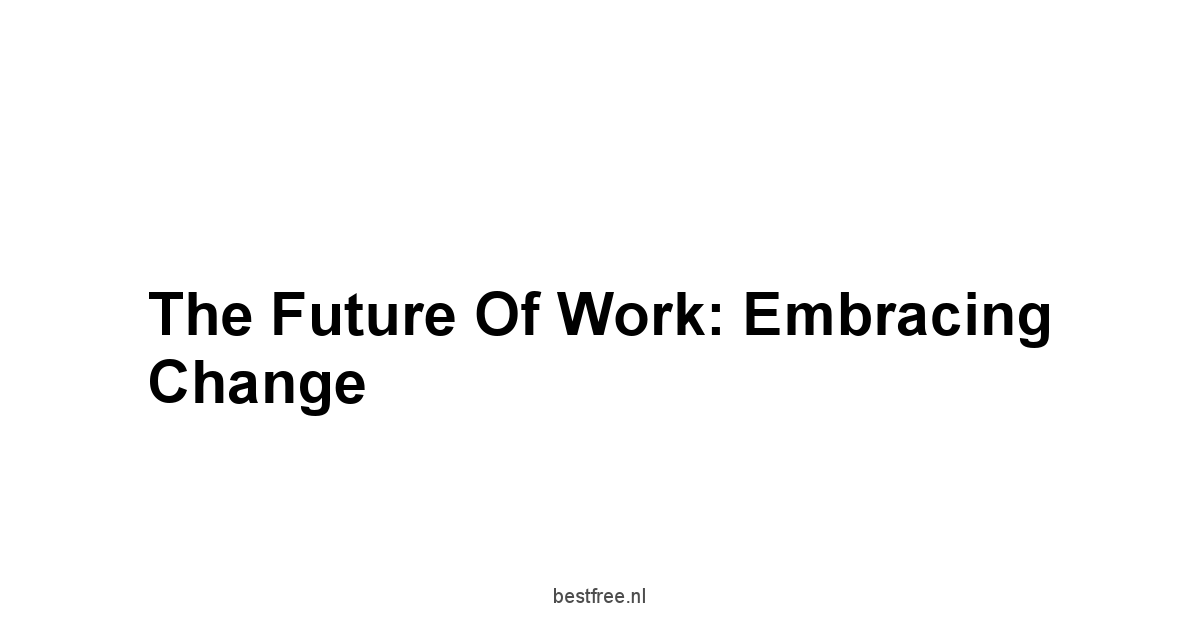
Companies must adapt. They must build workplaces that drive productivity, engagement, and satisfaction.
By 2025, 70% of workers will be remote, demanding flexible and innovative solutions.
Organizations that embrace change create a resilient workforce ready for challenges.
Redefining Workplace Dynamics with Technology
Technology reshapes workplaces. It fosters communication and collaboration over distances.
Remote work technologies connect teams seamlessly. New tools enhance productivity and creativity.
- Key Technologies for the Future Workplace:
- Cloud Collaboration Tools: Platforms like Google Workspace and Microsoft Teams enable real-time work.
- AI-Driven Analytics: Tools that reveal employee engagement and productivity trends.
- Virtual Reality VR: VR tools that provide immersive training and team-building.
Impact of Technology on Workplaces:
- Companies investing in collaboration technologies see a 30% boost in productivity.
- Remote work reduces employee turnover by 25%.
Tools for Enhancing Employee Collaboration
Collaboration among employees is vital for an engaged workforce.
Organizations need tools that foster communication, knowledge sharing, and teamwork, no matter where employees are.
- Effective Collaboration Tools:
- Project Management Software: Solutions like Asana or Trello help teams manage tasks and deadlines.
- Instant Messaging Platforms: Tools like Slack or Microsoft Teams enable real-time chats.
- Video Conferencing Solutions: Technologies facilitate face-to-face interactions from afar.
Employee Collaboration Benefits:
- A McKinsey survey found productivity increases by 20-25% in connected organizations.
- Teams using collaboration tools finish projects 50% faster.
Preparing for the Workforce of Tomorrow
To ready for the workforce of tomorrow, organizations must hone essential skills for a technology-driven world.
- Strategies for Future Workforce Preparation:
- Training Programs: Implement comprehensive training to close skills gaps.
- Career Development Possibilities: Offer advancement pathways that align with company goals.
- Mentorship and Support: Build a mentorship culture for learning from experienced colleagues.
Data on Workforce Preparation:
- Companies investing in training see a 24% rise in profitability.
- Organizations that prioritize development enjoy 56% higher employee engagement.
Also read: 8 beste gratis online cursussen
Strategic Partnerships and Collaborations
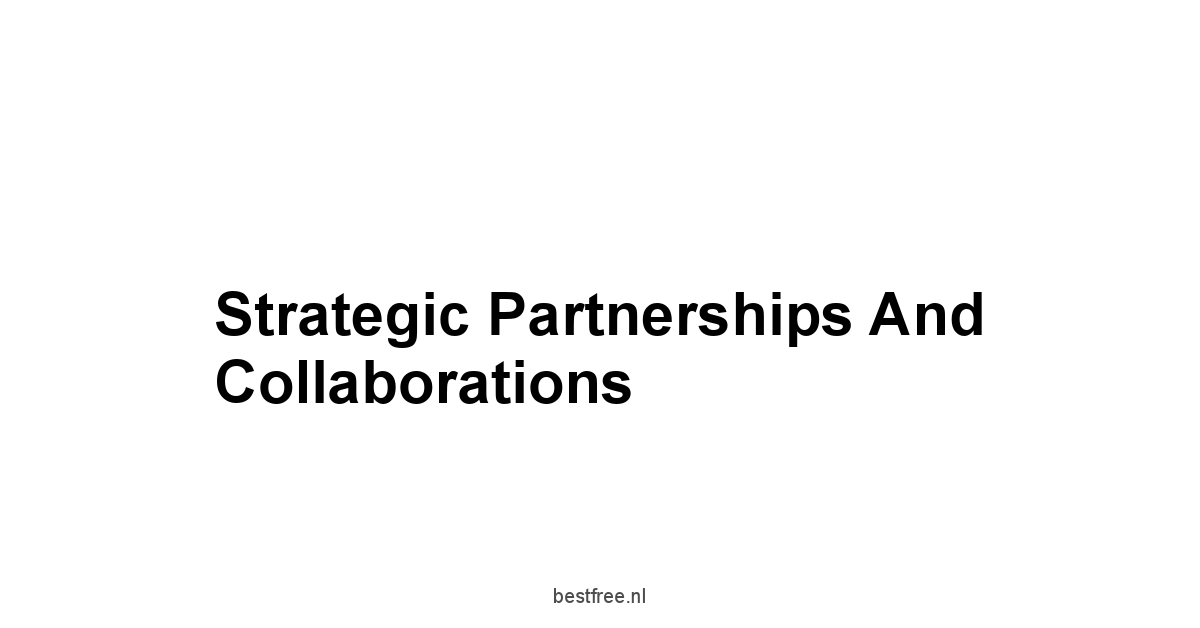
Strategic partnerships drive innovation. They let businesses seize new opportunities.
Collaborations enable companies to share resources, expertise, and expand their reach.
According to Accenture, companies in strategic partnerships grow 25% faster than those that do not.
Leveraging Alliances for Greater Impact
Strategic alliances create synergies that broaden reach and enhance products.
By partnering with similar organizations, businesses amplify market presence and pursue shared goals.
- Types of Strategic Alliances:
- Joint Ventures: Collaboration on projects while keeping unique identities.
- Technology Partnerships: Partnering with tech firms for their expertise.
- Research Collaborations: Working with academic institutions for innovation.
Partnership Benefits:
- Alliances can boost innovation capacity and speed to market by 40%.
- Companies in partnerships see a 27% increase in sales.
The Role of Ecosystems in Driving Innovation
Business ecosystems cultivate innovation by connecting stakeholders in an industry.
These ecosystems encourage interaction among companies, universities, research institutes, government agencies, and customers, yielding diverse ideas.
- Components of Successful Ecosystems:
- Collaboration Across Industries: Fostering partnerships beyond traditional limits.
- Shared Infrastructure: Developing platforms for cooperation, lowering barriers.
- Knowledge Exchange: Creating forums for knowledge sharing to spark innovation.
Ecosystem Impact:
- Businesses in ecosystems report 14% higher revenue growth.
- Organizations within innovation ecosystems are 25% more likely to launch new products.
Success Stories from Collaborative Initiatives
Success stories show the power of collaboration and strategic partnerships.
Organizations leveraging alliances to enhance operations set benchmarks for others.
- Examples of Successful Collaborations:
- IBM and Salesforce: Enhancing customer relationship management with advanced AI.
- Coca-Cola and McDonald’s: Collaborating on marketing to improve consumer experiences.
- NASA and Universities: Partnering in research to advance space exploration technology.
Success Metrics:
- Collaborative initiatives have led to a 15% increase in customer retention for joint ventures.
- Partnerships often cut operational costs by 28% through shared resources.
Also read: best free ibm consulting services in 2025
What do we think?
Businesses adopt these technologies. They enhance operations. They become innovators.
Research shows AI boosts profits. Hybrid cloud systems will lead the market by 2025. They improve cost and scalability.
With a focus on sustainability, companies find new paths for growth, meeting consumer demands for accountability.
A data-centric approach helps firms make accurate, informed decisions.
Using analytics, companies predict trends and behaviors. This leads to better performance.
Firms making data-driven choices see higher customer acquisition and retention. Data’s impact on the bottom line is clear.
As they navigate this era, businesses must build strong governance and foster continuous learning to keep their edge.
The focus on partnerships opens new avenues for innovation.
Collaboration lets organizations share resources, speeding market entry and enhancing products.
As they create ecosystems of diverse stakeholders, they uncover opportunities for creativity in a complex market.
The blend of AI, hybrid cloud models, and sustainability ushers in a new age of resilience and adaptability.
Organizations must see these changes as essential evolution, not just technology.
By emphasizing agility, planning, and stakeholder engagement, businesses can tackle challenges and grow.
The future shines for those ready to innovate, adapt, and collaborate in a connected world.
Also read: 8 best free email services
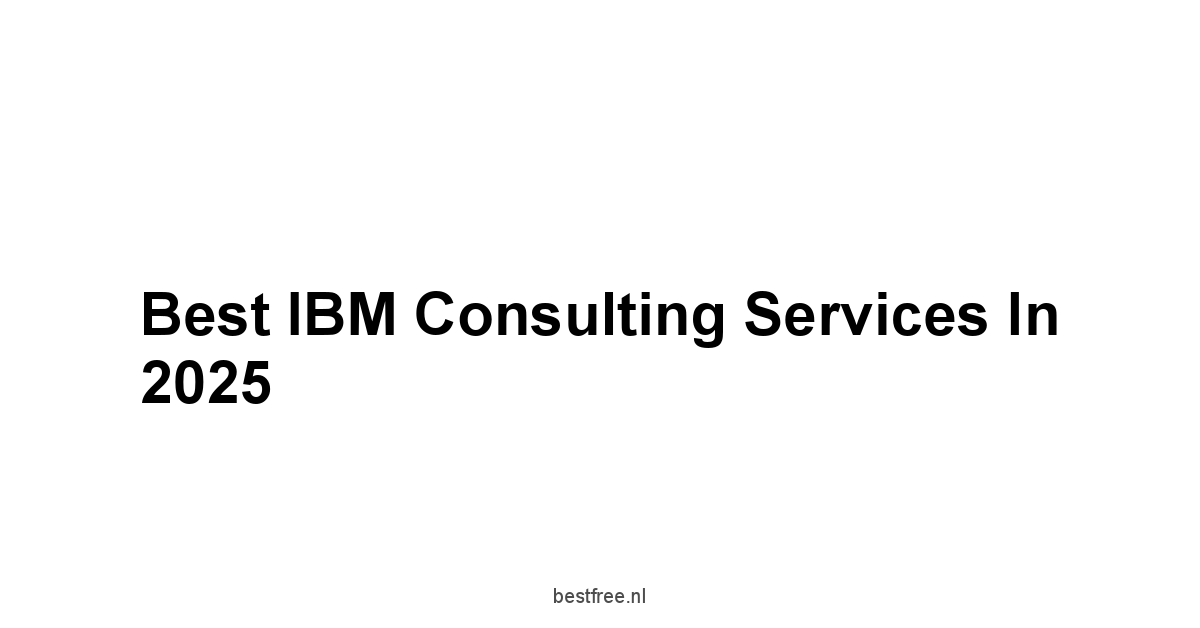




Leave a Reply